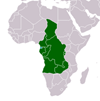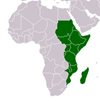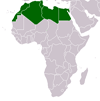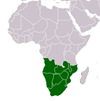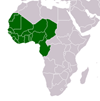Export Prospects of Middle Eastern Countries: A Post-Uruguay Round Analysis
Export Prospects of Middle Eastern Countries: A Post-Uruguay Round Analysis
February 1996 Middle Eastern countries' exports should increase by about $800 to $900 million as a result of the Uruguay Round tariff cuts. This represents an annual expansion of less than 1 percent. The projected overall gains are small because of the erosion of tariff preferences that these countries receive in OECD markets. The Uruguay Round made major progress in removing nontariff measures facing Middle Eastern exporters --- especially in agriculture, textiles, and clothing. As a result, the average OECD nontariff barrier coverage ratio for Middle Eastern exports should fall from 10 percent to between 1 and 2 percent. Exports in the Middle Eastern countries should increase from $800 million to $900 million as a result of the tariff cuts agreed on in the Uruguay Round, according to Yeats. This represents an annual expansion of less than 1 percent. Projected gains are small because the erosion of tariff preferences that Middle Eastern countries received in OECD markets offset the positive effects of reduced most-favored-nation tariffs on nonpreference-receiving products. And petroleum, the main Middle Eastern export --- which generally faces zero or low tariffs --- is unaffected by the Uruguay Round reductions. Egypt's projected gains (about $20 million, or under 0.5 percent of total exports) are concentrated largely in agricultural exports to the European Union and manufactures in the United States. Israel should experience net trade losses because of the erosion of its free trade area preferences in the European Union and the United States. The Uruguay Round made major progress in removing nontariff barriers that Middle Eastern exports face, especially in agriculture, textiles, and clothing. But with the removal of the Multifibre Arrangement, international trade in textiles and clothing will become much more competitive. Middle Eastern countries must adopt measures to cut costs and increase efficiency to remain viable exporters. As a result of what was achieved in the Uruguay Round, the average OECD nontariff barrier coverage ratio for Middle Eastern exports should fall from a current 10 percent to between 1 and 2 percent. Net food importing countries could be adversely affected by the higher international food prices expected to result from the Uruguay Round agreement. There is a clear priority for net food importers to adopt reforms stimulating domestic production. Prospects for increased trade in the Middle East are constrained by the similar comparative advantages and export profiles of many Middle Eastern countries. The most favorable prospects for intraregional trade appear to be between countries such as Cyprus, Israel, Lebanon, and Turkey --- net energy importers --- and the rest of the region. This paper --- a product of International Trade Division, International Economics Department --- is part of a larger effort in the department to identify factors affecting the exports of developing countries and to anticipate changes that may occur.
CITATION: Yeats, Alexander. Export Prospects of Middle Eastern Countries: A Post-Uruguay Round Analysis . Washington, D. C. : World Bank Group , 1999. - Available at: https://library.au.int/export-prospects-middle-eastern-countries-post-uruguay-round-analysis

